
views
Processing Food
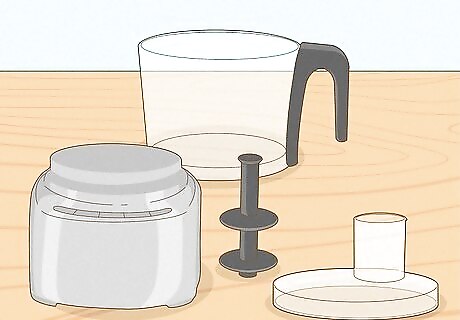
Assemble the food processor. Every brand of food processor is different. However, most models are assembled in a similar fashion. First, secure the plastic bowl to the electric base. Next, slide the blade into place. Wiggle the bowl slightly to be sure that everything is tightened into place. Always keep the processor unplugged when assembling it or changing the blades.
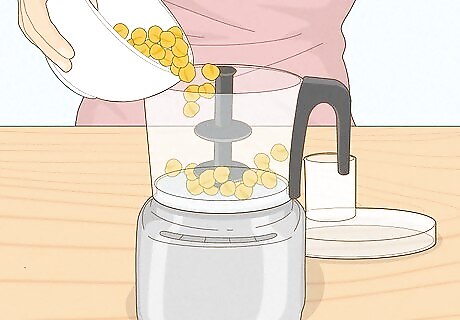
Add your recipe ingredients. Some recipes ask you to blend everything at once instead of adding ingredients one at a time. If so, you can add all the ingredients to the processor before closing the lid and turning it on. If you're adding liquids, make sure you don't pass the “fill” line on the side of the plastic bowl. Any hot ingredients should be cooled to room temperature before adding them to the food processor. Chop large ingredients into smaller chunks to help them blend more easily. EXPERT TIP Vanna Tran Vanna Tran Experienced Cook Vanna Tran is a home cook who started cooking with her mother at a very young age. She has catered events and hosted pop-up dinners in the San Francisco Bay Area for over 5 years. Vanna Tran Vanna Tran Experienced Cook Vanna Tran, experienced cook, tells us: "Unlike a blender, the bowl of the food processor has a hole in the center of it in order for the blade to fit onto the machine's blade shaft. Because of this, you'll want to avoid overfilling the bowl of your food processor to prevent spillage."
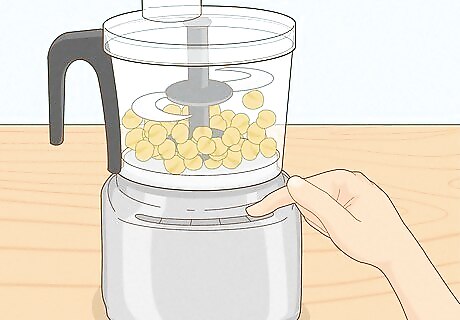
Process your food. First, secure the lid onto the food processor. Most food processors won't run until the lid is firmly in place. Next, begin processing your food. Most food processors have a “pulse” button and a “run” button. These buttons can be used to chop, blend, or liquefy food. The “run” button blends things continuously. This button is usually used to create mayo, blend ingredients into a smooth soup, or create chunk-free sauces. The “pulse” button is usually used to chop food. The processor will only run when you're holding the button down. Press the button in one second intervals until the food is chopped the way you like it. If your processor has more than two buttons, refer to your manufacturer manual for usage tips.
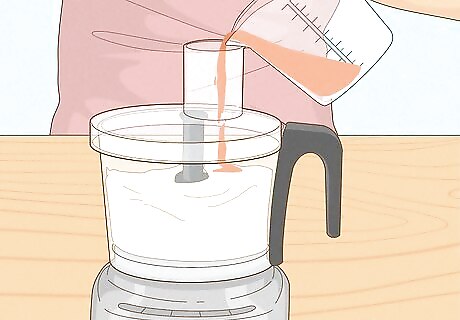
Add any additional ingredients. Some recipes ask you to add certain ingredients slowly throughout the blending process. If your food processor has a tube on the lid, you can add the ingredients while the processor is running. Use the plastic or metal tamper to press food into the processor. If your food processor doesn't have a tube, turn off the processor and remove the lid to add any additional ingredients.
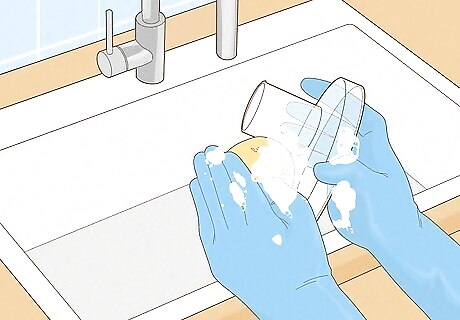
Clean your processor. Once you've completed your recipe, pour it into a serving dish. Next, move the plastic parts and blades into your sink and wash them with soap and water. Use a damp cloth to wipe down the electric part, removing any smears of food or liquid. Let the parts dry before reassembling the food processor. Never submerge the electric section in water, especially when it's plugged in. It will ruin the food processor and potentially electrocute you. Never handle the sharp part of the processing blades.
Using the Attachment Blades
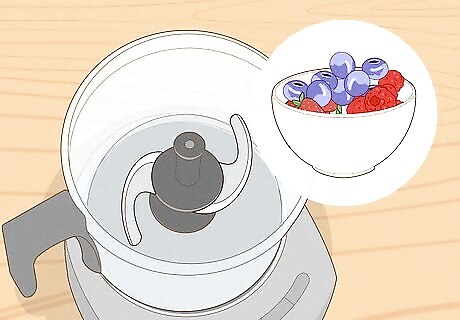
Insert the S-shaped blade. The S-shaped blade is the standard food processing blade that every model comes with. This blade can be used to chop fruits and vegetables, puree soups and sauces, and grind dry ingredients into a powder. If a recipe doesn't specify a blade attachment, use this blade.
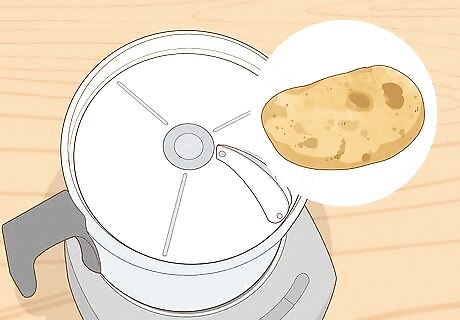
Choose the slicing disk. The slicing disk is an attachment that sits near the lid of the food processor. This attachment is usually connected to the blade mount with a long, plastic, detachable stem. The slicing disk is used to slice fruits and vegetables into thin, circular pieces. For example: Slice peeled potatoes into thin disks for scalloped potatoes or potato chips. Slice a variety of vegetables such as zucchini, sweet potatoes, and carrots into thin slices for veggie chips. Use the disk to slice raw Brussel sprouts. Add them to a fresh salad for a healthy crunch.
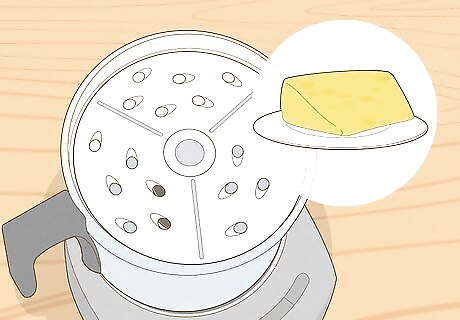
Use the grater attachment. Like the slicing disk, the grater attachment sits near the lid of the food processor. Some models of food processors combine the grating and slicing attachment. If so, you will have to flip the slicing disk over to use the grating feature. This attachment can be used to grate large amounts of food at once. For example: Instead of grating a block of cheese by hand, use your food processor to quickly grate the entire thing. Grate a variety of cabbage, beets, and carrots for your favorite coleslaw recipe. Quickly shred a few potatoes for a batch of latkes or hash browns.
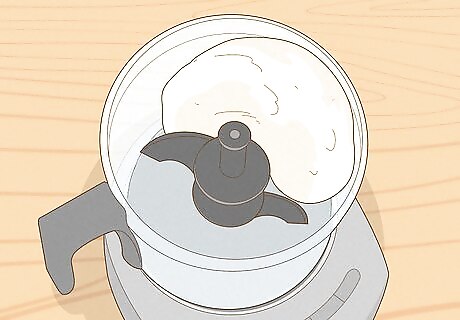
Knead dough with the dough blade. Some higher end food processors come with a dough blade attachment. This attachment is usually placed on the blade mount in the same position as the S-shaped blade. This blade can be used to knead: Pizza dough Pasta dough Pie dough Bread dough
Enjoying Food Processor Recipes

Make banana Nutella “ice cream.” First, freeze a bunch of bananas overnight. Next, peel the bananas and place them in your food processor. Blend them until the mixture is smooth. Add a large dollop of Nutella. Blend the Nutella into the frozen banana and serve it immediately. For a stronger Nutella flavor, add several dollops of Nutella. Top your scoops of banana Nutella “ice cream” with whipped cream, chocolate syrup, and cherries.
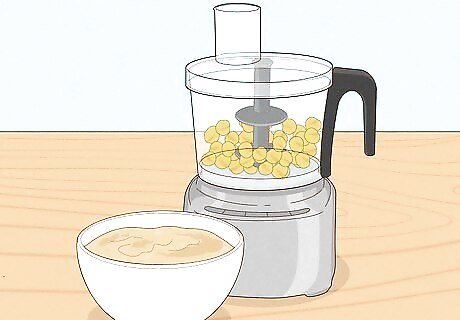
Blend chickpeas into hummus. Hummus is a creamy bean dip that has roots in Mediterranean cuisine. First, add your hummus ingredients into your food processor and run it until the mixture is smooth. Next, transfer the hummus into a serving bowl. Serve the hummus with a variety of chopped vegetables, pita bread, crackers, and olives. If you don't have a favorite hummus recipe, consider using: 2 cups (80 grams) of drained canned or cooked chickpeas 3 tablespoons of extra virgin olive oil 3 tablespoons of tahini 1 1/2 tablespoons of lemon juice 1 clove of garlic 1 teaspoon of salt 1/2 teaspoon of black pepper

Create a nut butter. Fresh, all-natural nut butters can be easily made in your food processor. First, add a few handfuls of your favorite raw or toasted nut. Next, run the blender until the nuts are chopped into a fine powder. Add a few tablespoons of an unflavored oil, such as safflower oil. Blend the mixture for another 8-10 minutes to create a smooth, creamy nut butter. You can use peanuts, almonds, sunflower seeds, cashews, hazelnuts, walnuts, pecans, macadamia nuts, or pistachios. Once your nut butter is ready, transfer it to a jar and keep it refrigerated.
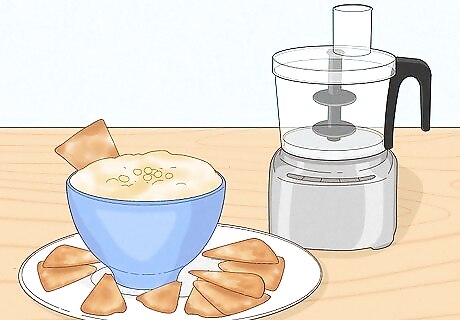
Make your favorite salsa recipe. Save time chopping vegetables by using your food processor instead. For a smooth salsa, add all the ingredients at once and run the blender until the mixture is puréed. For chunky salsa, pulse the ingredients until the salsa looks the way you like it. Use onions, jalapenos, and tomatoes to make a chunky pico de gallo salsa. Add dried or canned chipotle peppers to your favorite salsa recipe for a smoky, spicy kick. Blend salsa vegetables and cheese together to make a creamy salsa and queso dip.




















Comments
0 comment